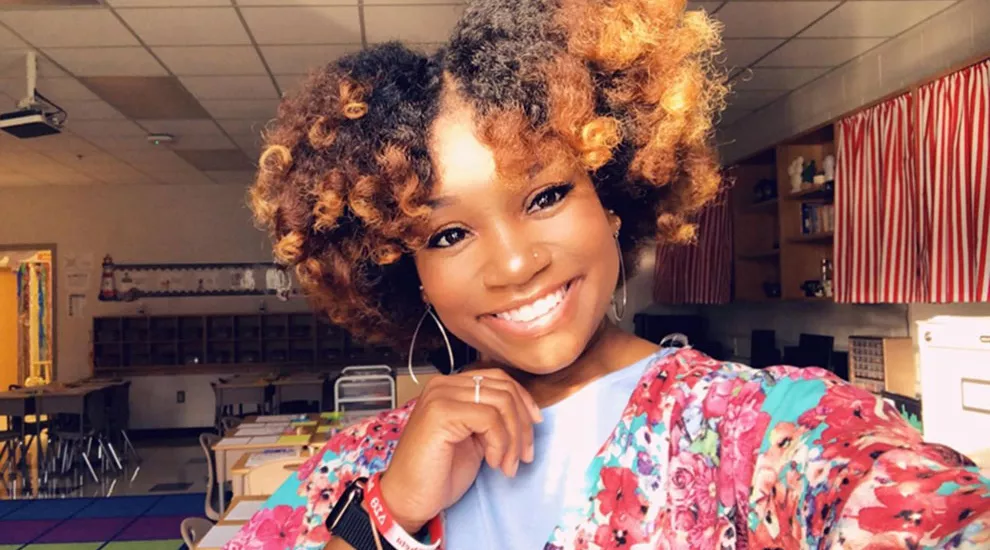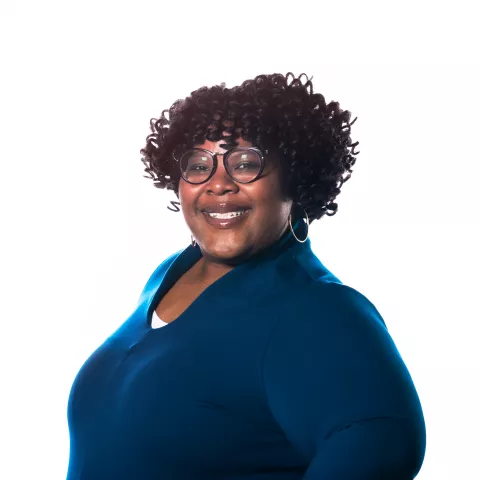
Odds are that most people have experienced their own personal bouts with multiplication tables. The tables do not change, the math is still the same. But the approaches to teaching multiplication are different.
We recently reached out to Megan Dickey, an early career third-grade teacher at Merrywood Elementary School in Greenwood and asked her to share her perspective on teaching third grade, math and all. Mrs. Dickey is a highly sought-after teacher among students and parents. When asked about Megan we were told that “Megan’s ability to take a mundane lesson and convert it to the ‘best lesson’ is a part of her calling as an educator.” Check out her insights below.
1. Why did you choose teaching as a profession?
I've always known that I wanted to be a teacher. Throughout elementary, middle, and high school, my adoration for teaching continued to strengthen, primarily because I was blessed with some amazing teachers over the years. As I entered my freshman year of college at Winthrop University, my desire to become an educator never wavered. From working alongside amazingly supportive professors and friends/colleagues who were also aspiring educators, I was (and still am) certain that teaching is my calling and purpose.
2. At the beginning of each year, you give your class a collective name. Can you share more about this process and why its important to you?
As I entered my first year of teaching, my classroom theme was "One Team, One Dream" which was also my school's theme. The concept of it was to foster the idea that we (myself, my students, and their families) were a team, working together to ensure the students' success (however that looked for them.) With it being my first year as a teacher, it was important to me to first build mutual respect and rapport with my students and parents through constant communication, positive and effective classroom management, and simply getting to know them as families and individuals. My second class' theme was "Parks' Sharp Bunch" which was essentially a cactus themed classroom, instilling in them that they indeed were very "sharp!" My third class' theme was "Parks' Pier" as they were about to journey into a school year of adventure, learning, and growth. Little did we know that COVID would shorten our adventure within a few months. Presently, my fourth class' theme is "Mrs. Dickey's Bright Bunch" as they shine bright through the adversities that we are currently facing this school year. Ultimately, I think that giving each class a collective name gives them a sense of ownership or pride. No one class has had the same theme, and each class has brought about their own identity in doing so. For example, when my third graders see one of my former students from the "Sharp Bunch," (who are now 5th graders) they are eager to speak with and to them, sharing their similar and different experiences with one another. It's also important that I do this because students need something to buy into. For instance, by addressing my students as "Team Parks, Bright Bunch, Parks' Pier, or Sharp Bunch," they believed these things to be true and were motivated to prove it.
3. What’s your favorite thing about teaching 3rd grade?
My favorite thing about third grade (as I have many) is being able to build relationships with my students. They've reached the age where they think that they are all-knowing, but they also know that they need someone to teach and guide them along the way. They need me, but they also enjoy facilitating their own learning experiences as well. There's balance. We push each other's buttons, have fun while learning together, and endure many other challenges and circumstances, but as a family - who doesn't? They are sort of like my younger siblings, in a way.
4. From your perspective, what makes the 3rd grade math pivot so difficult?
In my few years of teaching, the math pivot in 3rd grade has seemed more difficult for students because 1) the rigor enhances tremendously. The shock of the difference in their work-load from 2nd to 3rd grade is noticeable within the first few weeks. In grades K-2, students have often had their hand held when it comes to their school-work and the vast increase in expectations can be overwhelming for both the student and parent. 2) Not only are they learning new skills and concepts, but they are now being required to apply that knowledge as well. Just as the pivot for reading changes from learning to read to reading to learn, the math that the students will experience in and after third grade will require a deeper understanding than just surface leveled thinking - abstract. For example, they are shifting their mindset from the basic 10 + 7 = 17 because I can count up 7 seven digits from 10, to 17 is equivalent to 1 rod and 7 units, because 1 rod is the value of 10 units. In addition to the pivotal change in rigor, the students will face high-stakes standardized testing at the end of the school year as well.
5. We know that you use songs to teach multiplication. Can you share more about your teaching philosophy and the use of songs? Are the songs working?
I was introduced to a multiplication mashup a few years ago via YouTube, but knowing my students and their learning strategies, I
hardly utilized it because that just wasn't a helpful tool (for them) in teaching them their multiplication facts. You just have to know your students, and with my current group of students, they LOVE technology AND music. Put both of those subjects together and you have TikTok! My students absolutely love it: they sing/hum songs that they know, mimic dances, and even create dances of their own in the their free-time. So, as I was beginning to plan for this unit, I decided that I'd integrate the use of TikTok songs (instrumental of course) into our math lessons in order to teach them how to skip-count. My students love when their learning is made relatable to them and their interests, and I think they enjoy knowing that I listen to similar types of music as them. Prior to teaching them the songs, I introduced them to various multiplication strategies that they can utilize to solve multiplication problems. Once they were familiar and comfortable with using and applying those strategies to solve problems, they were (in my opinion) ready to skip count. After we created our first song, they wanted more. They wanted to learn more multiplication facts, more songs, and even wanted more practice solving the problems. We have since created songs for just about all of our times tables, and will soon be working on division facts songs as well. The songs have been successful; I love when the students come across a multiplication problem and instantly begin to sing the song that correlates to those facts simply because they have a useful and relevant tool to utilize.
6. Math is such a gatekeeper subject area. And parents struggle with new methods for teaching math, especially the area model! What suggestions would you offer parents seeking to help their children improve in math?
As new methods and strategies arise for teaching math, I would first encourage parents who struggle with helping their child, to reach out to their child's teacher and ask him or her for assistance, so that they can better help their child while at home. With math skills in general, it helps students grasp a better understanding of a concept when they can apply it to real life situations, ie: grocery shopping, playing sports, baking, etc. The possibilities are endless; you can access tutorials online, interactive games, and so much more in order to enhance your child's math skills. Make math memorable, meaningful, relevant, and fun for your child.
7. Tell us about your favorite teacher.
As previously stated, I was fortunate enough to have some amazing learning experiences growing up, all due to some of my amazing teachers and educators. My favorite teachers were my K5, 3rd, 4th, 5th and 6th grade teachers, among others. My 5th grade teacher impacted my life and stood out to me most because she was such a substantial role model. Everything that you could possibly desire from a teacher, she was sure to provide. She was encouraging, relatable, open, and created positive relationships. She was there for us, and it was evident every day, that we mattered to her as much as she did to us. She was the first teacher to foster my ability to lead (or be bossy as some may say) and ... she looked like me. People often say that "Representation matters," and as she influenced me to become an educator, that holds true.
Follow Mrs. Dickey on social media @thrillsnthird on Instagram and Twitter.

